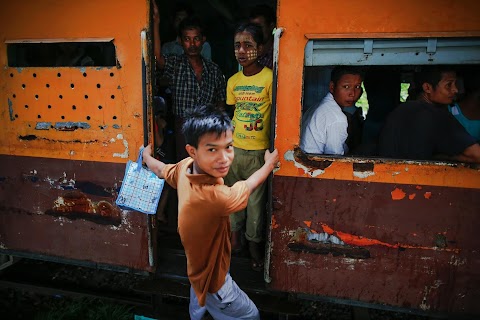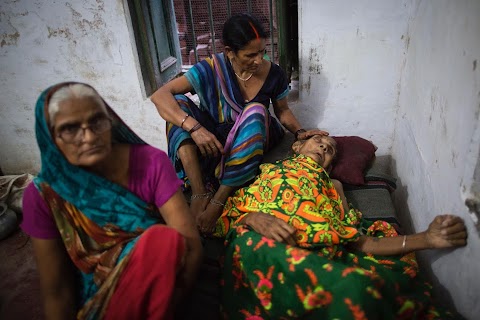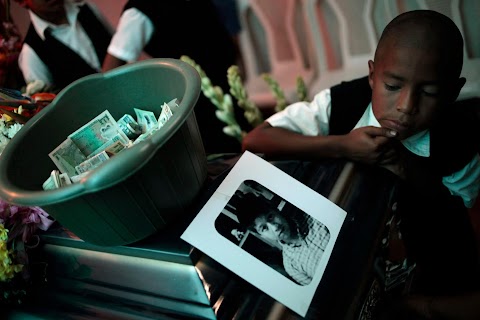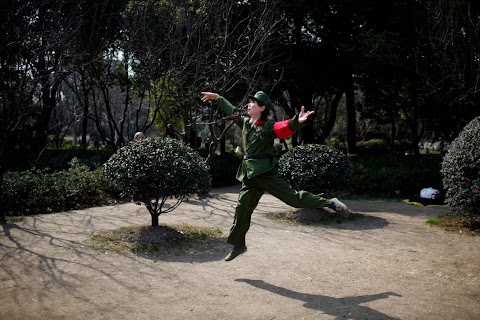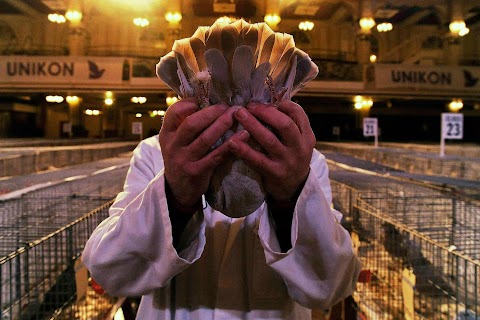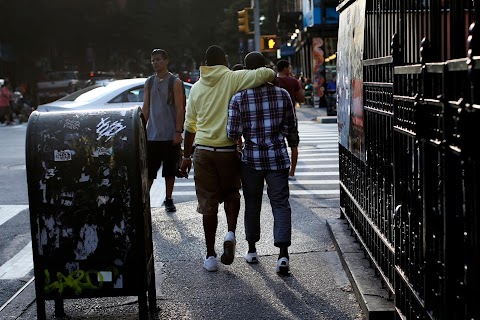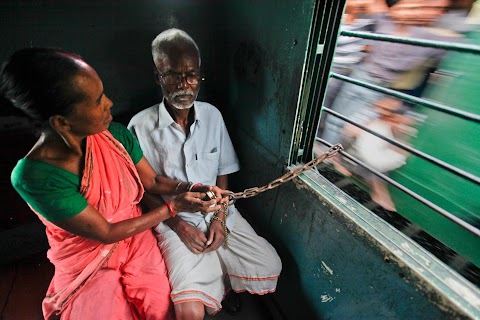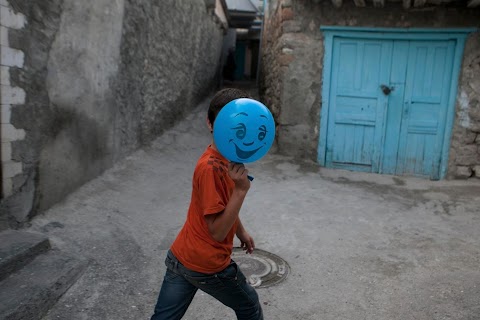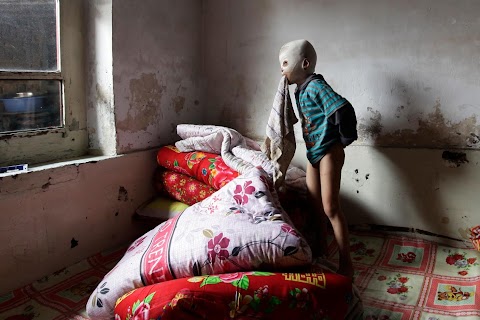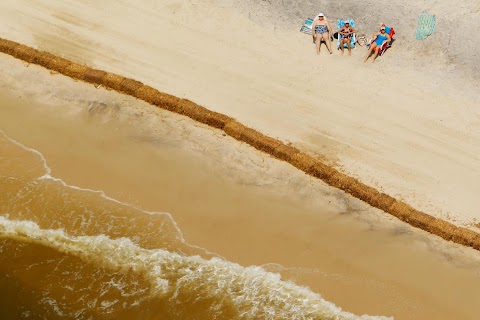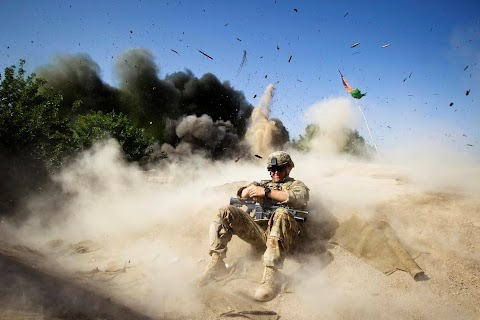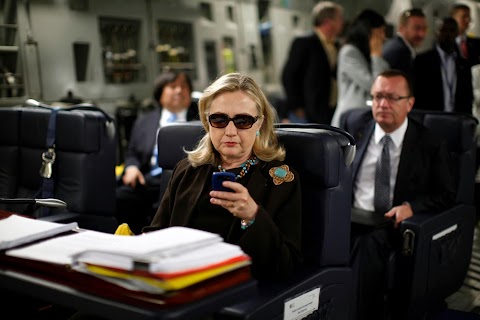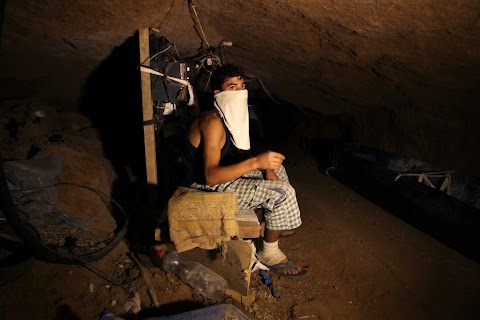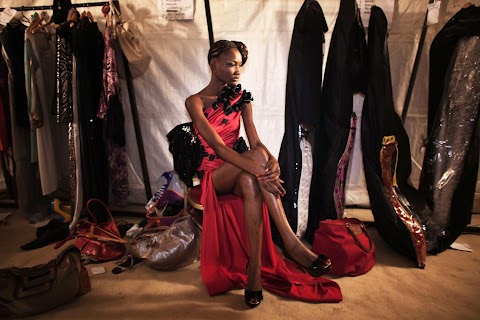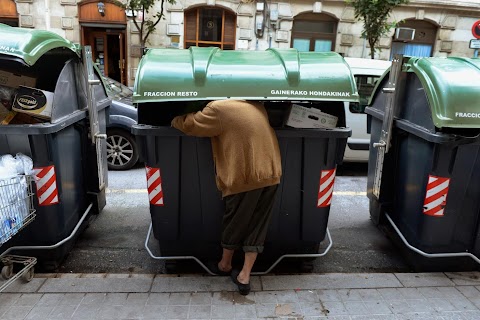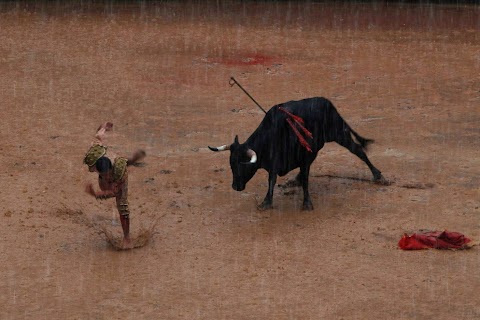
Blood in the bullring
 Edgard Garrido
Edgard Garrido
Mexico City is home to Plaza Mexico, the world's largest bullring. With a capacity to hold up to 41,000 spectators, this is where audiences flock to watch people like Juan Pedro Moreno, a young trainee torero, take part in the controversial, historical, and bloody sport of bullfighting.

A Mexican “banderillero”, whose role it is to pierce the bull’s neck with colourful barbed darts during the bullfight, adjusts his hat as the show is about to begin.
Slideshow

The career of a torero in Mexico can start early. Thirteen-year-old Mario Bueno "Mayito", whose trousers are stained with blood, was one of the children who took part in Mexico’s "Under-14 Apprentice Bullfighting Competition".

Roberto Morales, or "Gironcito", used to be a torero, but he left the profession and now makes clothes for other bullfighters instead. “I could only fight bulls for two years. Bullfighting is a vocation for the rich and if you are not, you have to find a godfather or do a lot of other things to get support and that wasn’t something I wanted to do,” he said.

Trainee bullfighter, or “novillero”, Mirafuentes de Anda, 20, readies himself for the arena in his hotel room.

Friends, family, godfathers and a tailor were all there to help Mirafuentes de Anda prepare for the bullfight.

A female trainee bullfighter, 18-year-old Paola San Roman, takes a moment to pray before the start of a bullfight in “La Mexico.”

A "picador", one of the mounted fighters whose job it is to stab the bull with a lance, prepares to enter the ring.

Twelve-year-old Juan Pedro Llaguno, 12, comes face to face with a bull during the under-14s trainee bullfighter competition.

During the same contest, Isaac Fonseca, 14, passes a cape around his head as he takes part in a fight.

A "banderillero" watches a bullfight in the huge arena of Plaza Mexico.

Mirafuentes de Anda passes his cape in front of a bull in Plaza Mexico.

Spanish trainee bullfighter, 21-year-old Tulio Salguero, grimaces slightly in the rain during a bullfight in Plaza Mexico.

The bull "Don Chava" falls to the ground, mortally wounded, during the apprentice bullfighters competition for under-14s.

"Monosabios," whose job it is to carry away the dead bulls, get to work with a new carcass.

The men prepare to pull the dead, bloodstained animal away.

One bull, who was given the name "Don Juan", is butchered in the slaughterhouse area of Plaza Mexico after having been killed by a trainee bullfighter.

Away from the arena, an apprentice bullfighter practices with his coach during a training session.

A “training bull”, used for practice sessions, is left by a wall at the Plaza Mexico ring.
"The bull was now in the arena, its breath pure saliva, and it immediately charged the protective wall I was standing behind."
All sorts of fascinations, prejudices, views and myths swirl around the subject of bullfighting. But whatever your opinion, one thing is undeniable: bullfights are a historical and cultural reality in Mexico. As a photographer, I felt they were something I couldn’t ignore.
And so for one month in the summer I photographed Mexican bullfights. Although I didn’t see many of the toreros suffer injuries, it was a very violent experience, both for the bulls and, I have to admit, for my own emotions too.
During that summer, I went to the Plaza Mexico, the largest bullring in the world, to get permission to photograph a bullfight. On the day of my first one, I suddenly found myself standing in a hallway in front of banderilleros, matadors, monosabios (workers who pick up the dead bulls) and a horse dressed in yellow padding.
I could sense the zeal, partly from the other photographers. But I was not from that world, I didn’t belong and people felt uncomfortable in my presence. Nevertheless, for me that was more of an encouragement than a problem.
The bull was now in the arena, its breath pure saliva, and it immediately charged the protective wall I was standing behind. Then it did a powerful jump and rushed into the fray.
The picador on horseback jabbed his lance into the bull’s spine, but the public jeered, showing they thought he was stabbing the animal for too long and with too much force. Later the banderilleros stuck banderillas, their barbed weapons, into the neck of the bull in order to tire the animal out.
Bull and torero were face to face, the public cheered as a band of trumpets and percussion recreated Spanish songs. The bullfighter, who was actually a “novillero”, or apprentice torero, was completely outclassed by the bull. He tried again and again to kill the animal with a stab of his sword, but he failed. An assistant finally gave the seriously injured animal a last deadly blow, and it was dragged from the arena to the slaughterhouse.
After the bullfight I walked to bar in Zaragoza street, where I had been invited to find out more about bullfighting. I met toreros, former toreros, representatives of toreros, tailors for toreros, photographers, some of whom were ex-toreros, and musicians who played and sang songs about this world.
While I was there, one elderly ex-torero asked me: “Have you ever been to a slaughterhouse? Have you ever seen under what conditions a bull is killed? If I were a fighting bull, I would prefer to fight with honour for my life against a torero instead of being hanged on a hook by my legs.”
The next day, I went to a competition for people who wanted to become novilleros – people aspiring to be aspiring bullfighters. Most of them were under 14 years old, but although the potential little novilleros looked anxious to confront the bull, they didn’t seem to show fear. They checked their muletas (bullfighters’ red cloths) and said goodbye to their parents.
When the fight was over, the children waved goodbye and left the ring with poise. The audience looked pleased as they exited the Plaza and the little toreros smiled. They were happy.
I sensed the same joy when I went to a bullfighters’ training session. About 20 people were working on their routines, some driving their swords into a practice bull, others rehearsing with the muleta, perfecting the movements of their wrists, hips and legs. They looked like ballet dancers.
A torero told me: “We have to prepare ourselves physically and mentally since very young, every day. There is so much technique to learn. The better you are, the less the bull will suffer. Our love for the bulls is immense. Torero and bull, we are one.”
He continued: “I respect the people who are against bullfights. But these animals are being bred for this. They are fierce animals and they are brought up for three or four years to be fierce.”
At a later bullfight, I managed to get into the area where the dead bulls were being butchered. In a corner I saw hoses, hooks, chains, a wheelbarrow and lots of bull horns stacked in the corner.
There were three or four butchers. One drove his knife into the belly of an animal, and blood flowed out in a powerful, rapid stream. He trod on the stomach of the dead beast over and over again in order to get all the blood out. Another butcher skinned the bull, after which I was asked to leave the area.
I went back to the bullfight and during the second round, torrential rain broke out. People started to leave the plaza; the arena was getting flooded. The judge decided to call it a day.
It was time for me to leave too. The last chapter of my bloody summer was closed.
